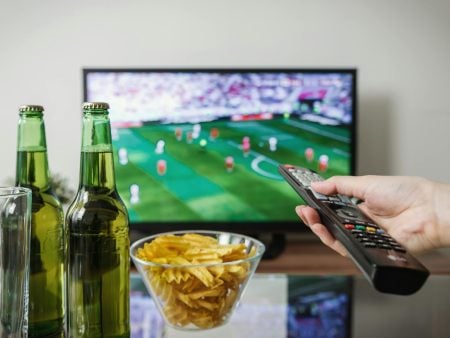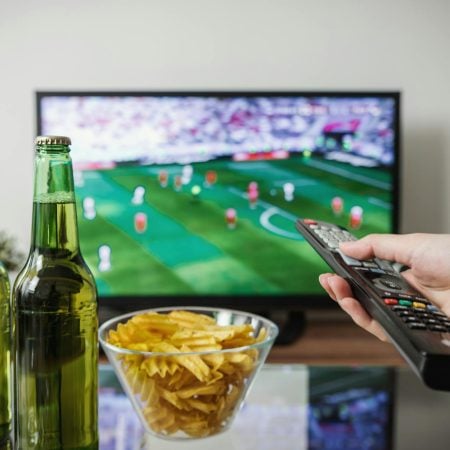The exhilarating sensations that accompany game betting–the excitement of a potential win, the anxiety of second-guessing, and the frustration of a near miss–are thrilling for a reason, particularly for the human brain. This is how the brain functions when it perceives the risk and reward mechanism. When bettors engage with the best sports betting sites in Florida, they realize that winning is about more than just statistics and odds. It is also about understanding the complex interplay of the brain in decision-making and risk-taking.
Neuroscience provides explanations for the starkly rational wagers contrasted with the predictable betting traps. Risk and logic dictate a set of irrational and impulsive wagering, which is particularly important when wagering with analytics and data.
These chapters illustrate the complex mental processes involved in wagering, probability, and counterintuitive decisions in betting, including anticipation described by dopamine, the brain’s risk processing centers, and the influence of stress and fatigue. We will explore the real betting world, where a system of thousands of interdependent decisions determines, consolidates, and ultimately frustrates the overarching betting goal.
By the conclusion, the goal is to provide insight into the neurobiology underlying your gambling behavior, the means to regulate it, and the integration of neuroscience with analytical decision frameworks. The objective is to develop functional foresight—having an understanding of your mental processes preceding the next gamble, rather than in hindsight.
The Science of Betting and the Brain
Since the inception of organized competition, there has been a form of gambling placed on the possible outcome of the competition. Although the way gambling is done has changed, the need to try and accurately predict the outcome of an event remains the same. In the last twenty years, the gambling research has shifted to the hard biological aspect due to the influence of the field of neuroscience.
Risk assessment and impulse control, in relation to gambling, are the functions of an interlinked collection of brain structures known as the reward system, which comprises the ventral striatum, amygdala, and the prefrontal cortex. The excitement of gambling is due to the prediction of winning and anticipating the result, which triggers a spike in dopamine levels. The spike and subsequent rise in dopamine levels, a reward prediction neurotransmitter, reinforce the winning behavior. However, loss prediction dopamine levels decrease, which the brain retains as loss.
Introduction of another fundamental concept: prospect theory. It illustrates how human beings assess outcomes not in absolute terms but in relation to a reference point (often a recent win or loss). Bets being placed indicate that one experiences losses almost twice compared to wins, which is the reason people make irrational decisions when there is a series of losses.
The digital environment opened a whole new set of challenges to modern bettors. The real-time odds, live feeds, and micro-betting features encourage rapid, iterative betting systems that activate core reward-seeking neural pathways. This neural trading system and its implications should be a primary area of focus for any bettor.
How Neuroscience Shapes Betting Choices
Risk and Reward Pathways
The region extending from the ventral tegmental area (VTA) to the nucleus accumbens is the core reward system, which facilitates reward-driven learning. Bettors exhibit varying levels of dopamine while assessing game odds and predicting wins. In fact, the expectation of reward is sometimes more psychologically significant than the reward itself. This explains the phenomenon of gamblers becoming “process” addicts when they lose money on bets.
The brain region activation patterns displayed during the assessment of reward uncertainty (gambling) are comparable to those displayed during substance craving. The excitement of gambling is processed in the mind like a mild euphoric stimulant, and uncertainty on a wager is paradoxically a reward.
Decision-Making Under Stress
Most people do not place wagers in a fully rational state of mind. Exhaustion, intoxication, and emotional pressure all influence how the prefrontal cortex governs rationality and inhibition. Under pressure, the amygdala in the brain—responsible for emotions—dominates and causes extreme reactions when winning and losing.
This translates in practice to a bettor in an emotional state doubling the wager without proper analysis. Conversely, a bettor in a state of exhaustion will ‘chase’ losing bets without proper analysis. Changes in the brain caused by even small levels of stress will tend to influence risk-taking by activating the limbic system and calming the control system.
Probability Misjudgment and Cognitive Biases
Humans frequently misjudge probability. The field of neuroscience analyzes how the brain deals with uncertainty by means of simplifications and shortcuts known as heuristics. The most common heuristics include the following:
- Availability heuristic. Recent and memorable events disproportionately influence value.
- Representativeness heuristic. Randomness is misperceived, and false patterns are assumed.
- Anchoring. Predetermined lines or predictions are rigidly complied with, even when significant changes occur.
These heuristics are likely evolutionary brain functions, meant to facilitate survival. Overconfidence is common when modern wagering is guided by such heuristics. These biases can be countered in tools such as statistical analysis, which can help bridge the gap between instinct and logic.
The Role of Feedback Loops
Every betting outcome reinforces the neural connections and synaptic plasticity, which explains the ability of the brain to rewire itself based on one’s experience. This experience is why gamblers continue to repeat the same behaviors even when the outcome is contingent on luck instead of reason. The breaking of these learned expectations becomes difficult with repeated exposure under the same circumstances.
In time, disorderly neural conditioning will either reinforce the positive disciplined habits or the negative impulsive risky habits. The difference is the awareness of feedback. The brain recalibrates reward signals and alleviates excessive noise-driven behavior when results are tracked objectively.
Social and Environmental Factors
Wagering takes place within a wider context than most people think. The social environment, be it social pressure, live chats, or observing other individuals’ bets, generates enough stimulation to activate the mirror neuron system. Increased social interactions and the presence of other people betting within a group increase impulsivity and the tendency to take higher risks, particularly when the social outcome of the bet is aligned with a social or psychological reward.
Florida sportsbook sites exemplify the risks of engaging with social interactive betting design. Understanding that external cues inhibit bettors’ ability to focus and determine rational game strategies evokes powerful external social reward systems to neural pathways controlling betting. This hyper-social environment justifies the reckless betting behavior.
Habit Formation and the Dopamine Trap
Neuroscience indicates that dopamine functions not only in response to rewards but primarily to prediction errors, or surprises. The greatest release of dopamine occurs when the brain holds one expectation and receives a completely different outcome. This explains why near misses feel almost as rewarding as wins. If unregulated, this “almost win” signal can construct highly conditioning loops that stimulate compulsive play.
For gamblers, managing exposure to these reinforcement-avoidance patterns—by limiting session length, tracking performance, and establishing predetermined rules—helps prevent the strategic shift towards compulsive behaviors.
Technology’s Influence on Neural Decision Cycles
Mobile betting applications utilize the same feedback systems as social media. Notifications, instant odds updates, and color signals all feed micro-reward systems. These systems shorten the contemplation and reflection periods, thus favoring instinctive decisions. This phenomenon is referred to as temporal discounting within the field of neuroeconomics—involving the preference for smaller, immediate rewards over larger, and more significantly delayed ones. Understanding the design bias allows the operator to help the bettor slow down and reintroduce decision-making.
Corrective Strategies
The combination of neuroscience and data analytics provides bettors with useful biofeedback tools, such as apps designed to self-monitor stress, mindfulness levels to help improve impulse control, and time-delay features designed to restrict rapid wagering. This suite of tools will, over time, help retrain the analytic neural response within the user.
Applying Neuroscience to Betting Discipline
Establishing Baseline Awareness
Emotional states should be recorded before and after each wager placed. Determine if fatigue, frustration, or excitement impacts the decision-making process.
Introduce Deliberation Windows
Introduce “decision pauses” after each bet is placed and before each is finalized. This gives the competitive system time to rest and allows the frontal cortex to reengage.
Quantify and Record
Use structured logs to maintain your bets. Record the reasoning and odds, and analyze them after the results. Satisfied thinking will become associated with accurate reasoning over time as the random wins are set aside.
Use Data Tools
Utilize odds aggregators, value calculators, and probability models. Intuitive thought should be replaced with concrete and measurable substitutes.
Control Feedback Loops
Do not place a re-bet immediately after an emotional loss or win. The re-bet should be saved for a different session. This will break the dopamine reward conditioning cycle.
Set Environmental Rules
Choose calm and distraction-free places to place a bet. Cognitive control and rational decision-making require environments free of stress or noise.
Apply Neurotech Support
Mindfulness apps help control the pacing of thought and assist rational decision-making. Breathing apps are also another way to control the pacing of thought.
Use Social Dynamics Carefully
Betting should only be discussed with rational data-driven peers as opposed to emotional and irrational peers. This provides reinforcement, focus, and helps rationalize the thought process.
Frequently Asked Questions
Q: Why Does My Heart Rate Increase Before Placing a Bet?
A: Anticipation triggers the sympathetic nervous system, leading to the secretion of adrenaline and an increased heart rate. This is a way the body prepares for an uncertain reward. Understanding this phenomenon allows one to disengage the thrill of excitement and rational reasoning.
Q: Can Mindfulness Improve Betting Outcomes?
A: Certainly. Mindfulness improves the regulation of the prefrontal cortex and decreases the overactivity of the amygdala, thus leading to more rational and stable decision-making in situations involving high levels of stress or pressure. Even just five minutes of focused breathing before a betting session works tremendously to reset an individual’s impulse control.
Q: Are Some People Naturally Better at Risk Assessment?
A: Loss of dopamine receptors, neural developmental constraints, and poor connectivity of the prefrontal lobe all contribute to an individual’s risk propensity. However, the positive acquisition of reflective practices and data training will enhance one’s risk assessment capabilities regardless of the wiring one is born with.
Q: How Do Near Misses Affect Motivation?
A: Near misses trigger the overestimation of dopamine release, thus leading to a false sense of progress. For this reason, compulsive behavior patterns are strengthened. It is more helpful to view near misses as random outcomes, not “almost wins”.
Q: Does Sleep Affect Betting Accuracy?
A: Yes. Sleep deprivation decreases the functioning of the prefrontal cortex and increases emotional dysregulation, leading to a disturbed assessment of risk. Analytical control will only be preserved with consistent sleep.
Q: What is behind the increased addictive nature of live bets?
A: The fast pace of live or in-play betting creates quick reward cycles. The rapid sequencing of decisions and outcomes can lead to damaging impulsivity as the dopamine reward response is engaged.
Q: How can I tell if I’m chasing losses?
A: If your recent bets lack calculated value and are primarily emotional reactions to prior outcomes, then your brain’s reward prediction system is in reactive mode. Recording your reasoning helps in identifying this shift.
Q: How Confirmation Bias Affects Florida Sports Betting Decisions?
A: In Florida sports betting online, confirmation bias makes bettors favor information that supports their existing beliefs—like backing favorite teams despite bad odds. This happens because agreeable info activates reward centers while conflicting data triggers discomfort. The result is skewed reasoning. Seeking data that challenges your picks keeps decisions balanced and objective.
Case Studies: Lessons from Real Betting Behavior
Success Example
A bettor began documenting every wager, including mood, sleep quality, and reasoning. Over six months, their betting volume dropped 25%, but ROI improved 18%. Neuroscientifically, this shift correlated with retraining the reward system—replacing emotional satisfaction with accuracy satisfaction. The structured reflection strengthened prefrontal dominance, reducing impulsive plays.
Failure Example
Another bettor increased wagers after near misses, interpreting them as signs of “being close.” Despite early small wins, losses accumulated. Neurofeedback later showed heightened limbic reactivity and reduced frontal control. The key lesson: unchecked dopamine conditioning can create false learning. Intervention—through breaks and environmental changes—helped reverse the pattern, but only after significant financial and emotional cost.
The takeaway: discipline rewires reward circuits. Awareness without structure fades; structured behavior reshapes the brain.
Future Considerations: Where Neuroscience Meets Betting Tech
Emerging research merges brain-computer interfaces, biometric tracking, and behavioral analytics. In the near future, bettors could access dashboards showing real-time stress markers or neural engagement indicators. AI-driven betting assistants may use biofeedback to suggest cooling-off periods or recommend lower-risk decisions when emotional markers spike.
Regulatory frameworks are also evolving toward ethical use of behavioral data—ensuring platforms don’t exploit vulnerability. Neuroadaptive systems could one day promote healthier engagement by limiting exposure during high-stress states.
As neuroscience integrates deeper into predictive analytics, the line between rational betting and emotional impulse will narrow, shifting focus from luck management to brain management.
Staying in Control: The Science Isn’t the Enemy
Understanding your own brain is the strongest edge in wagering. The same circuits that crave risk can also be trained for discipline and logic. When you understand what triggers dopamine surges, what clouds focus, and how to reestablish control, betting becomes less about reaction and more about regulation.
Keep observing patterns—mental, emotional, statistical. Use structured routines and unbiased data tools. Stay curious about the neuroscience, because the science doesn’t remove excitement; it helps you manage it intelligently.
If you’re exploring the best sports betting sites in Florida, remember that knowledge isn’t just in odds tables—it’s in your head. Learn how your brain decides before it does, and you’ll make choices that stand up over time, not just in the moment.










